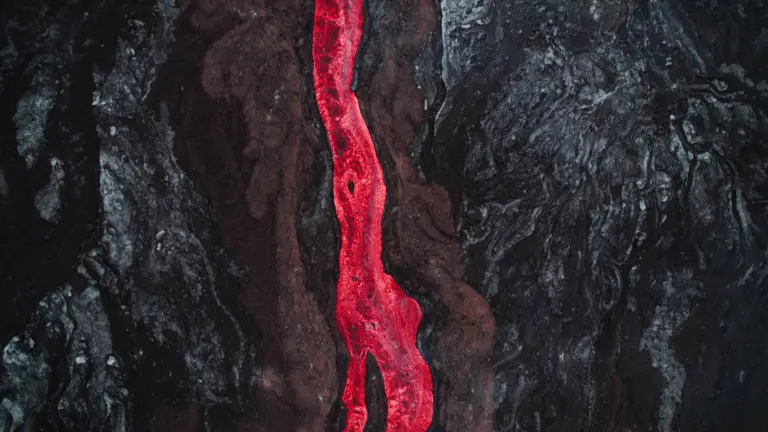CLOUDS OF ASH THAT STOP ENGINES, MELTED INFRARED CENSORS, AND MORE.
Flying over the volcano of La Palma, newly named Volcán Tajogaite, was not an easy task. As a local drone operator we realised that sunrises and sunsets were the best time to fly the drone and take aerial images of the La Palma volcano. The reason for this is the alignment of the Tajogaite Volcano with sunrise and sunset.
At sunrise, the area was protected by the Cumbre Vieja, so that all the gases emitted by the lava flows as well as the volcano did not cloud the atmosphere. Once the sun’s rays hit the gas particles, the whole atmosphere changed and imaging became more complicated. The same happens at sunset, although when night falls the images become spectacular and the volcano seems to become more active.
The main problem with night and sunsets is that the DJI drone camera had to capture a very bright element in the dark. Pushing the camera specifications to the limit. In this scenario it is advisable to focus on the luminous element and not overexpose the image. In other words, the final decision was to expose the image to a point below the magma and not to push the ISO, as the most striking information would be the lava rivers seen from the air with the DJI drone.


THE PROBLEM AT NIGHT IS THAT THE CAMERA HAD TO CAPTURE A VERY BRIGHT ELEMENT IN THE DARK. PUSHING THE SPECIFICATIONS OF THE CAMERAS TO THE LIMIT.
EQUIPMENT USED.
The star equipment for flying over volcanoes are the DJI Mavic 3 and DJI Mavic 2 Zoom drones. This is because they are small and relatively inexpensive compared to an Inspire 2 with a Zenmuse X7 camera. In addition, the possibility of zooming in while filming on the volcano is something that is much more appreciated, as opposed to a fixed focal point like the DJI Mavic 2 Pro has.
On the other hand, the small and handy equipment, as well as the large number of batteries (between 6 and 10 batteries), makes it possible to always carry a replacement drone, redundant material and interchangeability of components if necessary.
Many DJI Mavic Mini drones were also flown, but they were also the drones that were most frequently lost in the volcano due to their low resistance to wind and ash.

Contact
WE OFFER YOU A PERSONALISED BUDGET, IN JUST A FEW HOURS.
- Islas Canarias
- volamos@beedronrecord.com
- +34 674786386
© 2021 BeeDronRecord. Todos los derechos reservados. Políticas de privacidad- Términos y condiciones
